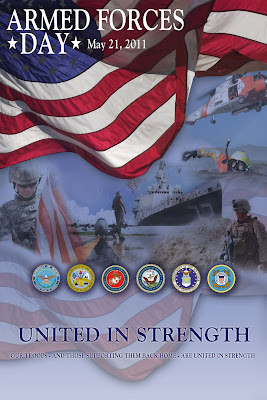 |
| Decoration Day (Memorial Day), c. 1899 (photo: Corbis) |
Two national holidays were born out of the conflict of the American Civil War: Memorial Day and Flag Day.
While Memorial Day honors the memory of those who died in battle, Flag Day simply honors the flag. It unifies. Given the particular way the Civil War tore this country apart, one can see the importance – and the need – for a holiday that remembers fallen heroes, and a holiday that unifies through the symbolism of a national flag.
 |
| Photo: DVIDSHUB (commandposts.com) |
On May 30, 1868, an early Memorial Day (then known as Decoration Day) was celebrated by decorating the graves of the Union and Confederate war dead at Arlington National Cemetery. This was per General Order No. 11 of Gen. John Logan, the Commander-in-Chief of the Grand Army of the Republic.
Decoration Day, more popular in the North than the South, served to honor the soldiers who died in the Civil War. (And yes, for a time there was a Confederate Memorial Day.)
In the 20th century, Decoration Day soon became Memorial Day, a holiday honoring all war dead. Interestingly, Memorial Day did not become a national holiday until 1971. It is tradition that members of the US 3rd Infantry Regiment (the "Old Guard") decorate the graves at Arlington National Cemetery (see photo above and this link: www.army.mil).
In the 20th century, Decoration Day soon became Memorial Day, a holiday honoring all war dead. Interestingly, Memorial Day did not become a national holiday until 1971. It is tradition that members of the US 3rd Infantry Regiment (the "Old Guard") decorate the graves at Arlington National Cemetery (see photo above and this link: www.army.mil).
Gen. Logan's General Order No. 11 states:
"The 30th day of May, 1868, is designated for the purpose of strewing with flowers or otherwise decorating the graves of comrades who died in defense of their country during the late rebellion, and whose bodies now lie in almost every city, village, and hamlet church-yard in the land."
You can read the complete order at:
You can read Pres. Obama's Prayer for Peace at:
You can view the 2011 Arlington National Cemetery Memorial Service at:
The scoop about Flag Day coming soon!








